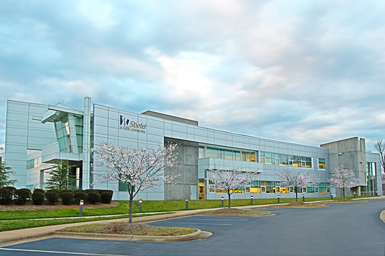Finding highly skilled labor is the number-one driver for nearly every site-selection decision. Companies are increasingly seeking more refinement in identifying specialized skill sets as their labor needs become more specialized. For example, the software development field has an extensive array of specialties and certifications that can be critical requirements for employers — yet there is very little reliable data on the depth of these specialties across markets.
“The best method to evaluate the depth of the market for these specialties is to put the data aside, roll up your sleeves, and start talking to experts in the market,” says Mark Seeley, senior managing director for CBRE’s Labor Analytics Group in Phoenix, Arizona. “HR managers and recruitment agencies can provide a wealth of insight into the availability of highly specialized skill sets. While this can be a time-consuming process, it is also highly enlightening and provides insight into local labor dynamics that go well beyond what the data can tell you.”
CBRE Labor Analytics Group recently completed a relocation project for a large financial services company that required 350 corporate IT jobs. Because these workers required such specialized skill sets, the site selection criterion was highly focused on the supply, skills, and costs of the available work force. After conducting a nationwide search for the financial services company, the client selected New Orleans as the final location for its IT center of excellence. “The operation has been open for approximately 12 months and has already measured a 25 percent increase in productivity,” says Seeley. “They attribute a large part of this improvement to the skilled labor force they found in New Orleans.”
John Boyd, principal with site location firm The Boyd Company in Princeton, New Jersey, has worked extensively in the pharmaceutical sector, helping locate GlaxoSmithKline’s Stiefel Laboratories to North Carolina’s Research Triangle Park and Melbourne-based Mayne Pharma to Montreal. Requirements for both projects included finding clusters of highly skilled scientific and technical talent in the life sciences to staff these expanding operations.
“Many site-seeking clients, especially in the life sciences sector, don’t want to be the ‘pioneers’ who go first into a city or region,” says Boyd. “The successful retention of key management and technical staff in the initial move, and the ability to recruit top talent nationally in the years ahead, will be severely compromised if transferees or applicants feel that, if the current job does not work out, they have limited options in the same field in that city.”
Work Force Development Can Help
Companies also like to have access to state-run work force development departments that are eager to help design pre-employment assessment and selection processes for identifying the best job candidates. Some states also provide low-cost or zero-cost, state-managed training programs to tweak the skill sets of new employees, if needed. Georgia’s program —Quick Start — is one of the most renowned in the nation.
“The Atlanta, Charlotte, and Nashville regions are doing some excellent work in work force development to match employers and employees, including delivering credential/certification programs for residents in their areas,” says Larry Gigerich, managing director for Ginovus, a site selection firm based in Indianapolis. “This focus in Atlanta and the state of Georgia was critical to ExactTarget’s decision to add 200 positions in Atlanta during the next three to five years,” he adds.
ExactTarget, a digital marketing software-as-a-service provider, will invest $1.25 million in the expansion. Top site selection factors the company focused on included a talented work force with solid IT skill sets, advanced IT infrastructure, and low operating costs.
Advanced manufacturing is another industry that requires highly skilled labor, especially with computerized equipment and assembly operations. That’s one reason firearm manufacturer Sturm, Ruger, and Company will invest $26 million in a new manufacturing plant in Rockingham County, North Carolina, hiring about 500 new employees over the next five years. New positions will include production workers, toolmakers, manufacturing engineers, and product design engineers.

Stiefel Laboratories’ global headquarters, Research Triangle Park, N.C.
“There is a phenomenal work force in this area,” states Sturm, Ruger, and Company President and CEO Mike Fifer. “We’ve had two job fairs and the response has been tremendous — the caliber of the potential employees is really impressive.”
“Skills” and “Quality”
Some companies confuse “skills” with “quality.” Companies want both, of course, but the methods used to evaluate these factors can vary widely. Data can be used to evaluate a market’s depth of certain skills (although, as skill requirements become more specialized, data integrity erodes and more “boots on the ground” methods are required). Evaluating “quality” — a blend of work ethic, attitude, and skills — is a far more subjective process that is not easily defined by data.
Measuring the cost impact of locating in a market with a larger talent pool of higher-quality, highly skilled labor is very difficult, because it impacts each company differently. However, a company is likely to see substantial savings from the benefits of the higher productivity that are often associated with a skilled labor force.
“By locating in a market that provides a deep base of the requisite skills, companies will experience shorter training cycles, lower turnover, and overall improvement in operational performance and efficiencies,” says Sean Carman, senior director for CBRE’s Labor Analytics Group. “All of these things have a positive effect on a company’s bottom line and profitability.”



